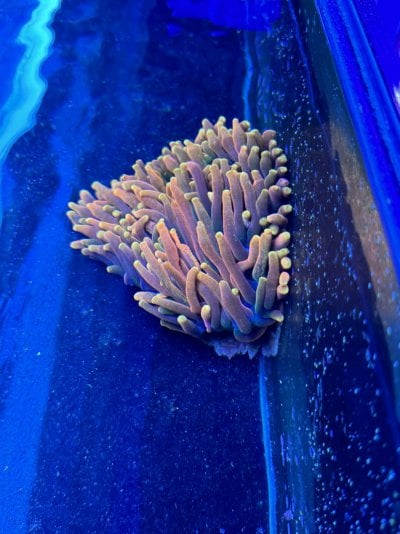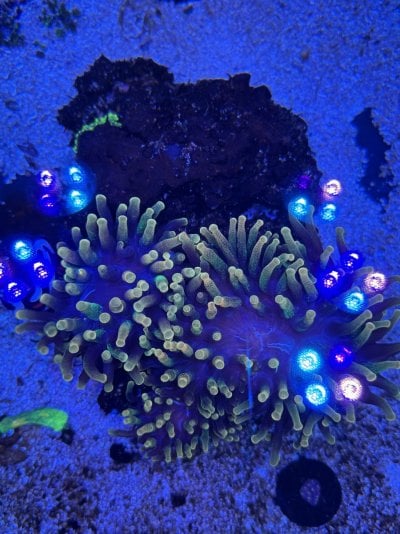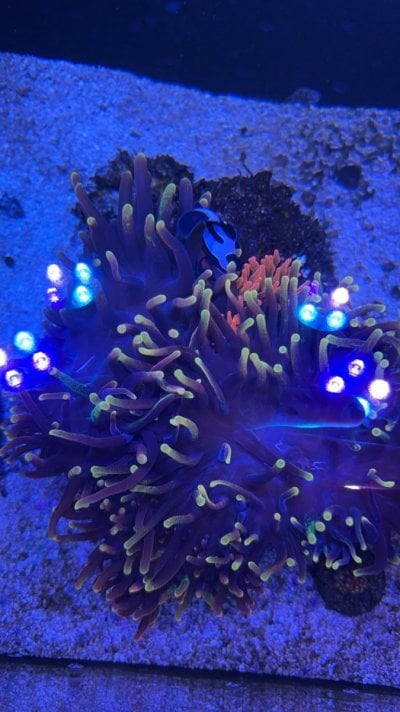Hi guys I’ve got two photos of the same nem here posted below. The photo with the single nem was mine in the store when I bought it(under t5, it’s now under leds). It has since split to three but browned out completely. There’s two pics of it in my tank, one with more yellow. It has now hit the point where it’s losing that too. Current image is the most brown, I believe the last one.
Any ideas what I should do to get the colour back?? Not very sunbursty….. They’re getting enough flow and light. And to my knowledge the water chemistry should be fine. Fed mysis and or anemone pellets occasionally. They are growing quite fast, just no colour.
Alk: 10
Temp: 82
Salinity: 1.024
Nitrate: 5ppm
Par: 200



Any ideas what I should do to get the colour back?? Not very sunbursty….. They’re getting enough flow and light. And to my knowledge the water chemistry should be fine. Fed mysis and or anemone pellets occasionally. They are growing quite fast, just no colour.
Alk: 10
Temp: 82
Salinity: 1.024
Nitrate: 5ppm
Par: 200

















